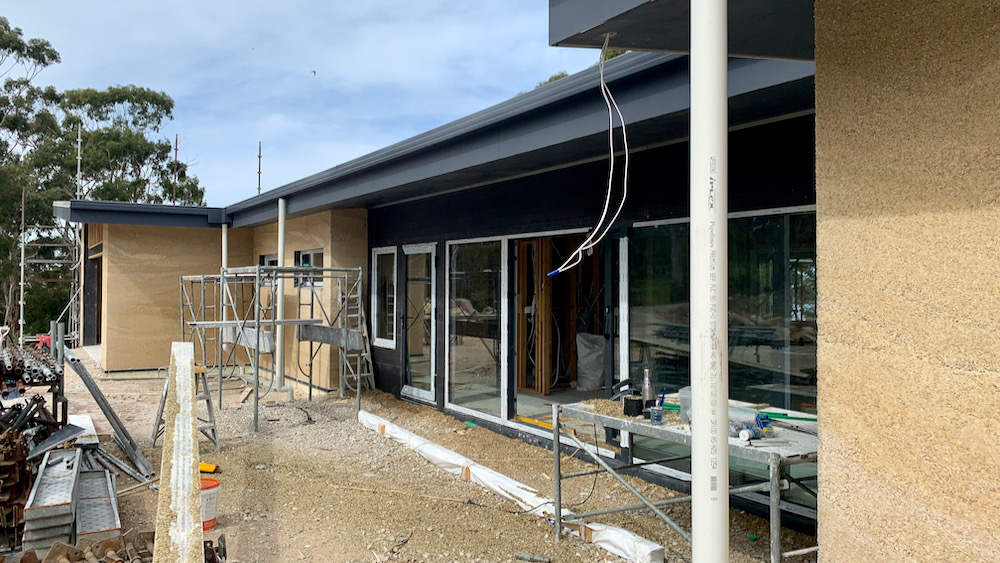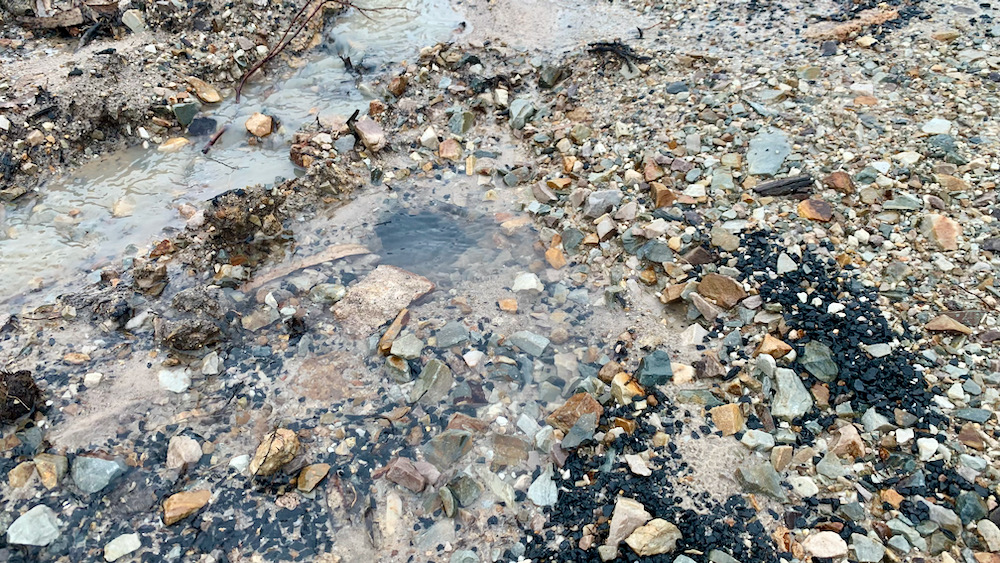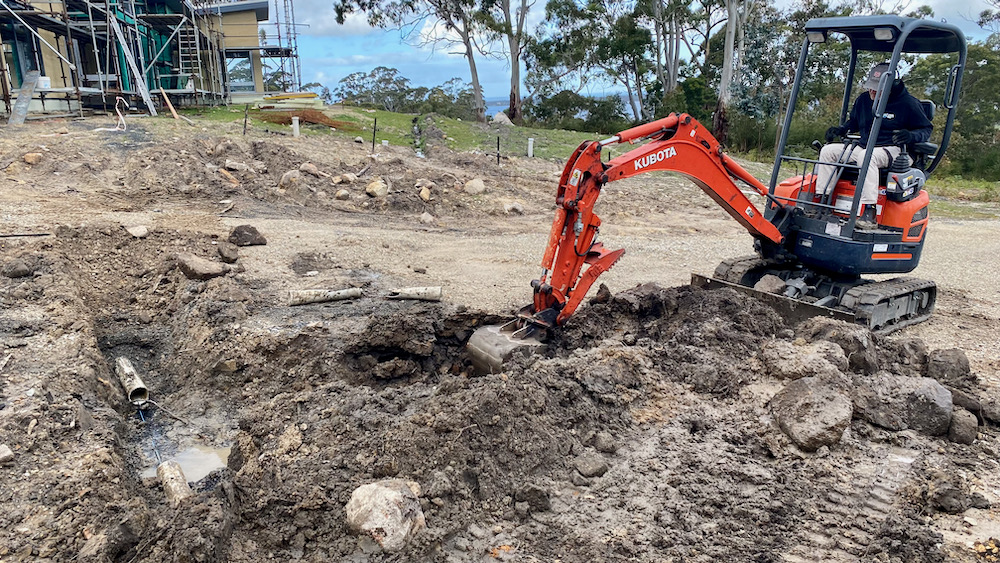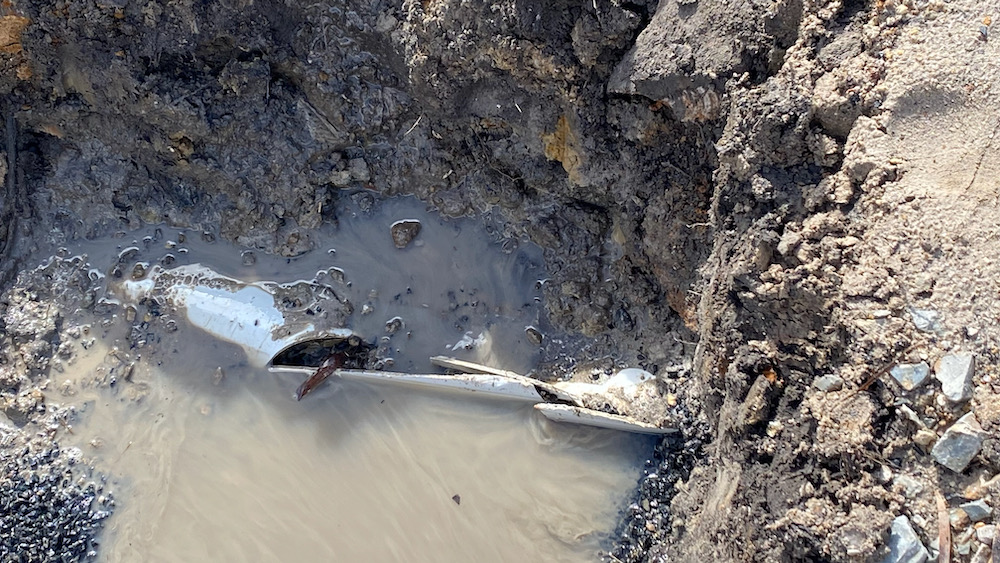we had a lot of rain recently. i’m not sure whether this is already due to the third la nina season in a row, climate change, or just sheer luck, but the shed water tanks are almost entirely full, despite all the water we used up to mix the hemp & to clean the equipment.

when we saw all the rain coming kris & i quickly installed the temporary storm water pipes, protect the hemp walls and avoid turning the area in front of the house into a pond, but also because we really wanted to start collecting rain water. after all, you never know when the next ‘refill’ comes around.

you can imagine our surprise – and disappointment – when we figured out that the rain water was disappearing into the pipes as it should, but none of it came out of the spout on top of the water tanks. it was not immediately apparent where things went off the rails; the little creek on the top left in the photo above is actually what the ‘dry creek bed‘ looks like when it isn’t dry. that hole just next to it, however, was a little suspicious.

we had to dig a little deeper to solve this mystery. did i ever mention that i have no idea what we would do without the excavator? it was not easy to remove all the soil without doing further damage to the pipe, but by now i have done a few hundred hours on the machine, and learned to be sufficiently precise.

the original damage to the pipe was almost certainly also done by an excavator, albeit a significantly larger one. when the contractor moved the rocks around the water tanks into place he must have crushed it. the result was not only a lack of water finding its way into the tanks, but also the fact that the surplus water instead seriously washed out the crossing of the new and the old track up to the house.

we were lucky that the machine appears to only have damaged one small length of pipe, a bit less than a meter. however, getting the replacement part in was no easy feat. after all, the sleeves need to extend about 50 mm left and right onto the old pipe … btw, the black & blue pipe underneath it is the return pressure pipe that directs the water back to the house, and somewhere a bit further below it are the electrical cables to power the pump.

we made it work. i doubt it would qualify as a professional repair, but it should do. we’ll check tomorrow; i’ll also have to connect the tank sensor so we can see how much water we are harvesting. that should then also tell us if there are any further issues. hopefully it’s all running smoothly now.
